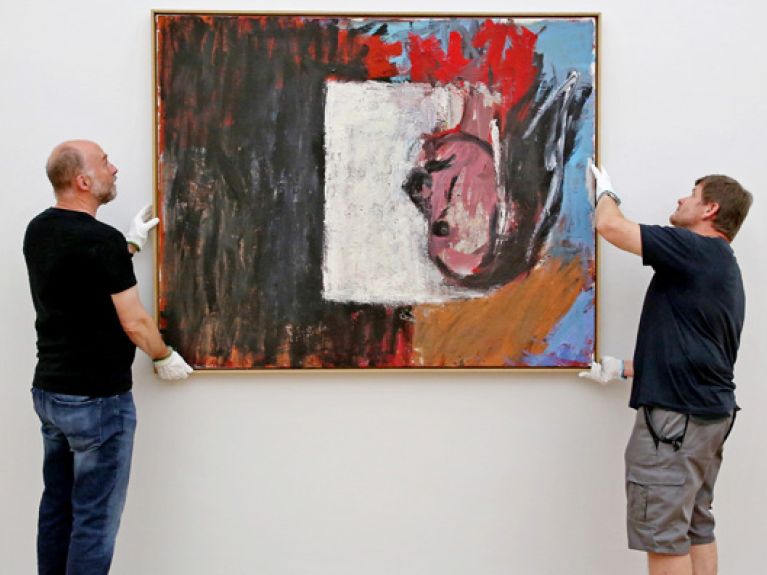Private possessions or national art treasures?
Hefty debate has erupted in Germany about a planned law to protect cultural assets. Renowned contemporary artists like Gerhard Richter and Georg Baselitz are vehemently opposed to the bill. An overview of the different positions.

Are they private possessions or nationally important art treasures? A vigorous argument is currently raging about this question. Like all other member states, Germany has to implement an EU directive dating from 2014. It aims to help countries organise the return of cultural assets that were illegally taken abroad. The Federal Government took the opportunity to undertake an overall examination of the rules governing the protection of cultural assets in Germany. As a result, it intends to consolidate three existing older laws into one new law that is meant to improve the instruments for combating illegal trade and restrict the sale of “nationally valuable cultural assets” abroad.
However, debate has arisen mainly about the definition of “nationally valuable cultural assets”. Since the time of the Weimar Republic there has been a list of works that cannot be sold abroad because the government wants to keep them in Germany due to their special national significance. Monika Grütters, Minister of State in the Federal Chancellery and Federal Government Commissioner for Culture and the Media, would now like to add additional works to this list. Artists and collectors are afraid that their property could be generally treated as national cultural assets. A sale abroad would then only be possible, if at all, with a special permit.
Gerhard Richter considers this an attack on freedom
The new law does indeed envisage placing entire public collections under protection. That would be advantageous for museums, because, for example, it would be easier for them to demand the return of stolen works if they re-appear in another country. The increased protection is also important with regard to archeological finds. Nobody should be able to profit from the illegal trade in these objects. “Unfortunately, the protection of cultural assets previously received little attention in Germany,” says Monika Grütters. “We are correcting that now.”
However, many representatives of the art scene oppose the plans. Gerhard Richter, the world’s most sought-after living painter, sees the planned law as an attack on freedom. “Nobody has the right to tell me what I can do with my pictures,” he told the daily Dresdner Morgenpost. The painter and sculptor Georg Baselitz withdraw several loaned exhibits from the permanent exhibition at the Albertinum in Dresden. The law’s supporters reject this criticism. In the future, it will still be possible to export over 90% of cultural assets. Furthermore, they say, representatives of the art trade were involved in discussions on the new law from the very start.

